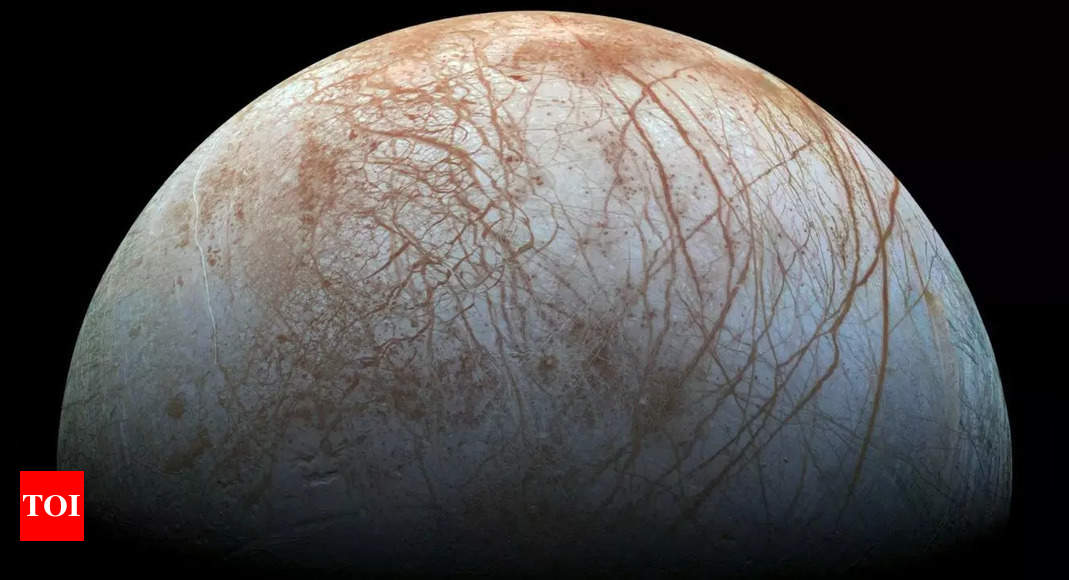
Have you ever wondered if there is life beyond Earth but haven’t found one except our Universe? But actually, how to determine the search of life beyond your home Universe? According to the scientists, they suggest that there are three core ingredients which are determined to make life easier and livable. Additionally, life requires time to develop, so one should explore worlds where sufficient time has passed for life to potentially emerge.
Jupiter’s icy moon Europa: Ingredients of living
Jupiter’s icy moon Europa may contain these crucial elements and is as old as Earth. NASA’ s Europa Clipper spacecraft is the one which helps to conduct an in-depth study of Europa and assess whether its subsurface ocean can support life. Understanding Europa’s habitability will enhance the knowledge of the potential for life beyond our planet and guide our ongoing search.
Water
Liquid water is the primary ingredient for life, and Europa is abundant in it. Scientists believe that beneath Europa’s icy crust lies a salty ocean containing twice as much water as all of Earth’s oceans combined. Water is vital as it dissolves nutrients for organisms, facilitates chemical transport within cells, supports metabolic processes, and helps eliminate waste. There’s strong evidence of a rocky seafloor beneath Europa’s ocean, and hydrothermal activity could provide chemical nutrients that support living organisms.
Europa appears as a half-sphere against the dark backdrop of space. Its surface is off-white with a slight bluish tint, featuring long, dark rusty lines. On the left side, these lines are tightly packed, while on the right side, they extend deeper and curve across the moon’s surface. The image reveals more of the moon at the bottom, fading into darkness.
This intriguing surface of Europa is showcased in a reprocessed colour image derived from photographs taken by NASA’s Galileo spacecraft in the late 1990s. The best evidence for an ocean beneath Europa was gathered by the Galileo spacecraft, which orbited Jupiter from 1995 to 2003. Although Europa lacks its own magnetic field, the Galileo spacecraft detected a magnetic signature during 12 close flybys, likely caused by a global ocean of salty water beneath its surface.
Europa’s bright, icy exterior is unlike any found on Earth. It is the smoothest body in the solar system, with few mountains or deep basins. The surface is crisscrossed by ridges and grooves, and many features align with long, dark reddish streaks stretching over 600 miles (1,000 kilometres). Additionally, domes, pits, and clusters of icy blocks suggest warm ice may be rising from below.
Images of Europa’s surface reveal patterns of cracks and ridges indicative of a global ocean capable of producing large tides that deform the surface. The largest impact structures on Europa show concentric patterns, suggesting that impacts may have breached the icy shell into liquid water. Moreover, the moon’s surface geology indicates that warm ice has likely risen from the ice-ocean interface.
Models propose that Europa’s icy shell is stretched and released by Jupiter’s gravitational pull as the moon orbits the giant planet. This phenomenon, known as tidal flexing, generates internal heat within Europa, possibly maintaining the liquid ocean beneath its surface.
Chemistry
In addition to water, life as we know it requires specific chemical elements—such as carbon, hydrogen, nitrogen, oxygen, phosphorus, and sulphur—that are fundamental building blocks. These elements are abundant in the universe and constitute 98% of living matter on Earth, combining to form organic molecules essential for life. Scientists believe these elements were incorporated into Europa during its formation and were later augmented by organic materials from colliding asteroids and comets.
While all life on Earth is composed of organic molecules, simply discovering these molecules does not necessarily indicate the presence of life. They can form through non-biological processes as well. However, finding such molecules on Europa would help determine whether the essential ingredients for life ever existed on the icy moon.
Some of these vital chemical elements may currently reside within Europa’s icy shell, while others could originate from its core and the weathering of the moon’s rocky interior. Tidal flexing may facilitate the cycling of water and nutrients among the moon’s rocky interior, icy shell, and ocean, creating a chemically rich aquatic environment conducive to life.
Energy
The third vital ingredient for life is energy, which all living organisms require. On Earth, most energy comes from the Sun, with plants harnessing sunlight through photosynthesis to produce energy. This energy is then transferred to humans, animals, and other organisms when they consume plants. However, any potential life forms on Europa would likely depend on chemical reactions rather than photosynthesis, as they would exist beneath the ice, far from sunlight.
Europa’s surface is bombarded by radiation from Jupiter, making it inhospitable for surface life. Yet, this radiation might create energy sources for life within the ocean below. The radiation can break down water molecules (H₂O) in Europa’s thin atmosphere, allowing hydrogen to escape while much of the oxygen remains, potentially bonding with other elements. This reactive oxygen could facilitate chemical reactions that release energy, possibly supporting microbial life if it reaches the ocean.
Additionally, Europa’s ocean is likely in direct contact with warm rock at its seafloor. As Europa orbits Jupiter, its interior flexes, generating heat (similar to how bending a paperclip produces heat). The more the moon flexes, the more heat is generated, which can provide hydrogen and other chemicals to the ocean.
If the rocky ocean floor is heated by tidal flexing, it could supply energy in the form of chemical nutrients through hydrothermal vents. This process is analogous to what occurs in hydrothermal vents on Earth, first discovered in 1977 on the Galapagos Rift in the Pacific Ocean. These discoveries revolutionised our understanding of life on Earth and are considered among the most significant breakthroughs in ocean science.
Also Read | SpaceX’s fifth Starship test flight successfully launched: Know about the Starship rocket system and journey of “Chopstick” arms







